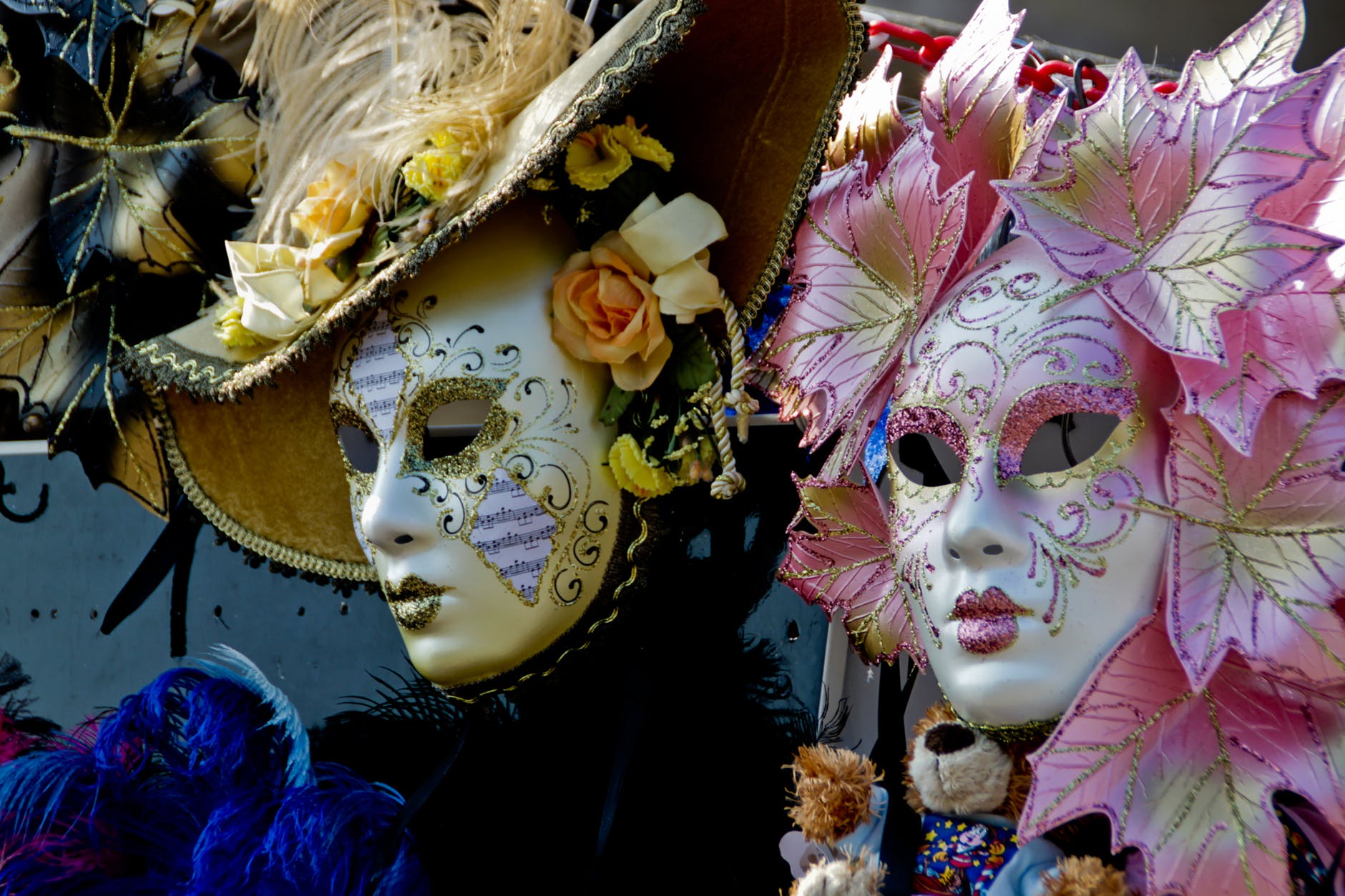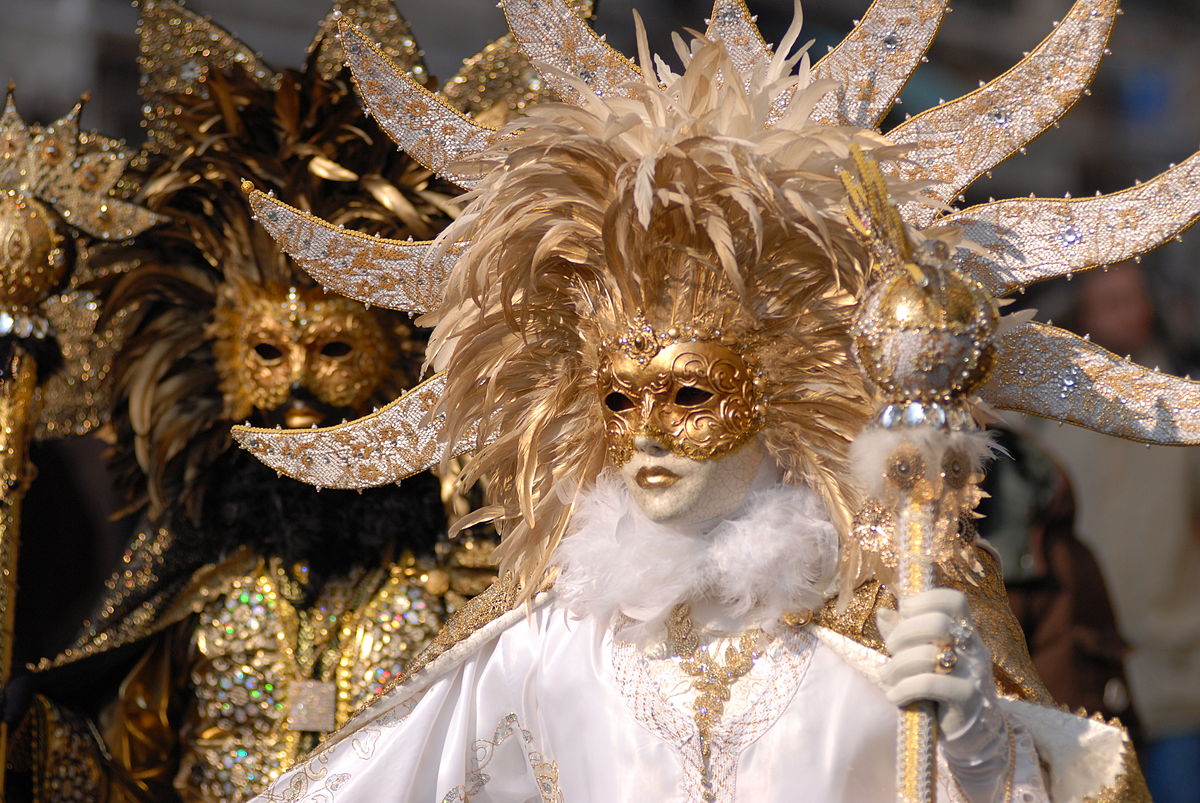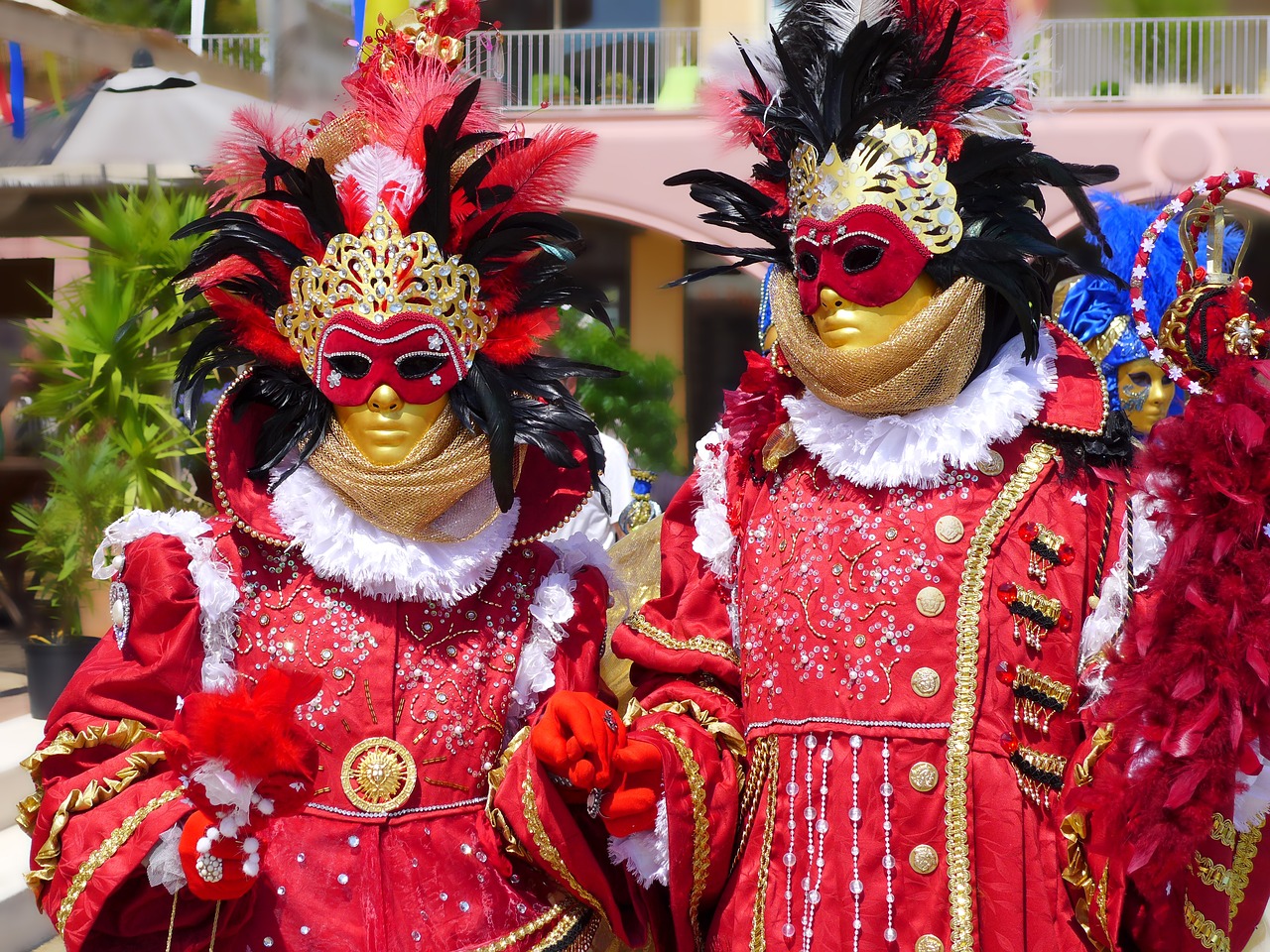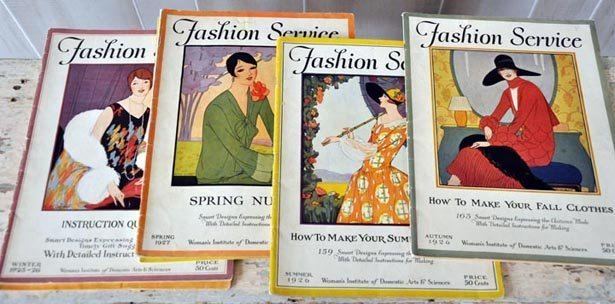Carnival in Venice

The Costume IS the Performance
by Shelley Monson, First published for the January/February 2011 issue of Finery
Today we use the word “carnival” to mean much the same as circus, but in the past it referred specifically to the celebration of the holiday Shrove Tuesday, the last day before Lent. Shrove Tuesday, known as Mardi Gras or Fat Tuesday in French-speaking countries, is the last binge before the privations of Lent. It grew out of the necessity to eat up the perishable foods which were not allowed during Lent and would not keep till it was over, such as meat, eggs, and milk; this necessity was combined with elements of ancient spring fertility rites.
The celebration of Carnival per se began in Italy during the Middle Ages: the first records of carnival in Venice are from the 12th century. Carnival is a time when the world is turned upside-down: a time of unrestrained gaiety, a spiritual purge of repressed fears. The opportunity to become someone else allows us to leave our problems behind. It functions as an escape valve, allowing the release of tensions that might otherwise be expressed more dangerously. All social distinctions are abandoned; masters and servants are equals. In the past there was a significant political aspect to the festivities – they confirmed the power and wealth of the city, and there was also a “bread and circuses” element. The authorities hired the best artists and poets of the time to design the entertainments.
The 18th century was a decadent period in Venetian history; the city was hugely wealthy, but her mercantile importance was diminishing because trade was turning to the New World and because direct trade routes to the Orient were opening. This period saw the climax of the splendor of Carnival; foreign visitors recorded that Carnival seemed to last all year. By this time, visiting Venice during Carnival had become an essential part of the Grand Tour.
Carnival started on Christmas night with a procession by the Doge to the Church of San Stefano Protomartire. On St. Stephen’s Day, the 26th of December, the Doge banqueted with his followers, and the nobility and wealthy citizens promenaded in the Piazza San Marco. From then until Ash Wednesday, festivity was unbounded. Entertainments included fireworks, acrobats, tightrope walkers, performance of the moresca (a battle mime dance), puppet theatres, boat races and boat parades, menageries, peepshows, fortune-tellers, hawkers, bull and bear baiting, and so forth. Theatrical performances were held both in theatres and outdoors; concerts and dancing were continuous, ending with a grand ball in the Piazza San Marco on the evening of Shrove Tuesday. The celebration ended at midnight on Shrove Tuesday, when the bells of San Marco and of San Francesco della Vigna summoned all revelers to church; the music and dancing ceased, and everyone unmasked.
In 1797 Venice fell to Napoleon without a blow being struck; he ceded the territory to Austria, which suppressed masquerade by restrictive legislation, because a conqueror could not afford the opportunities for subversion afforded by a large masked population. This legislation sounded the death knell of Carnival. Masquerade became limited to the nobility at private parties in the days immediately preceding Ash Wednesday. There was a brief revival in the mid-19th century, but it eventually died out altogether. Carnival was revived most recently in 1981, and since then it has been held every year, becoming once again a major tourist attraction for Venice.
The use of masks was controlled by law. Disguises were allowed only between St. Stephen’s Day and Shrove Tuesday, and at certain other specified times of year. However, during that time, they were required and worn everywhere.
The most popular costume was the bauta, which comprises a cloak (tabarro), a hood of black silk & lace (zendale), a tricorne hat and the larva mask, all worn over everyday clothing. The word larva means ghost in Latin, and you may have observed the ominous effect that it has on the viewer. Used by both men and women, nobles and commoners, the bauta eliminated all social distinctions. Persons wearing the bauta were not required to tip their hats to anyone they met in the street, because by doing so they would let their mask fall – it was held on only by the hat. The universal wearing of masks, especially the bauta, permitted a great deal of sexual license; a woman who was discovered in an illicit liaison could always protest that she had thought it was her husband.
Masks were manufactured in Venice in great numbers and supplied the market all over Europe. They were made of leather or papier maché formed in a mold, then painted, much as they are today. Another very common mask for women is the moretta – plain, oval, featureless, made of black velvet. Often worn by maidservants, and sometimes by their mistresses; it was held on by a button gripped in the teeth, and therefore had the “attractive” effect of rendering a woman silent.
Other costumes were also popular, including the mattaccino, a brightly colored clown-like costume. The domino originally was a hood covering the head and shoulders, but by the 18th century it had become a full-length hooded garment worn over ordinary clothing. It did not mean a half-mask until the 19th century. The plague doctor costume dates back to the Renaissance, when doctors wore this not as fancy dress, but as protection against catching the plague from their patients. The long beaked mask holds a sponge soaked in vinegar, to prevent infection. The gnaga, another characteristic costume, were young men dressed as women. Commedia characters were, and are, perennial favorites. Modern Carnival costumes tend to be colorful and fantastical; there are many popular themes, such as the sun and moon; the jester; matching couples and groups; and historical costume. The bauta is still very much worn, as is 18th century costume in general. When the costume is not historical, its focal point is always the mask. The domino remains popular as a foil to an elaborate mask. Masks are made in a variety of styles and techniques, and those by big-name mask-makers can be very expensive. One variant that is frequently seen is the mask-behind-a-mask; this is a descendant of the 18th century “portrait” mask, where a mask portraying a real person is worn beneath a second mask; these were outlawed in the 18th century because of abuse, but are again made today.





Leave a comment